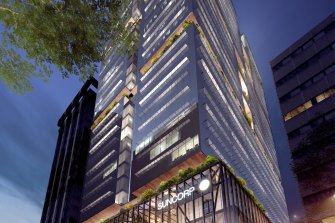Diversified group Mirvac has become Australia’s first property company to achieve a net positive result for scope 1 and scope 2 carbon emissions, nine years ahead of its 2030 target.
The milestone was achieved via four steps that have helped the group reduce its carbon emissions and meet the net positive target.
These include maximising the energy efficiency of the portfolio by monitoring performance, conducting night audits, and optimising asset performance.
Speaking at the group’s virtual annual general meeting, chief executive Susan Lloyd-Hurwitz said the initial focus on energy efficiency reduced Mirvac’s carbon intensity by 20 per cent from 2013 to 2018.
“Mirvac’s retail, office and build-to-rent portfolios are supplied with 100 per cent renewable electricity and where we have embedded networks, we on-sell renewable electricity to our customers, reducing our scope 3 emissions by around 50,000 tonnes in 2021,” she said.
In line with the rise in electric vehicle use, the group’s new developments such as 80 Ann Street in Brisbane, the new home for Suncorp, have all-electric base building operations and operate on 100 per cent renewable electricity.
Mirvac is an ASX-listed developer and owner of office, retail and industrial properties and is the country’s largest medium- and high-density residential and build-to-rent developer. Its market value is $11.04 billion.

Mirvac’s planned skyscraper for 80 Ann Street, Brisbane, and the future home of Suncorp.Credit: Supplied
Progress is also being made to remove the reliance on fossil fuels from existing assets. Mirvac has been a long-time advocate of limiting its carbon footprint, and in March it revealed a green ceramics range of apartment fittings together with Professor Veena Sahajwalla, the newly appointed NSW Australian of the Year, and the UNSW’s SMaRT Centre to create new, sustainable building materials from waste.
Chairman John Mulcahy told shareholders that it was his last meeting and the company was engaged in a search for his successor. He was appointed a non-executive director of Mirvac in November 2009 and moved to the chairman role in November 2013.








